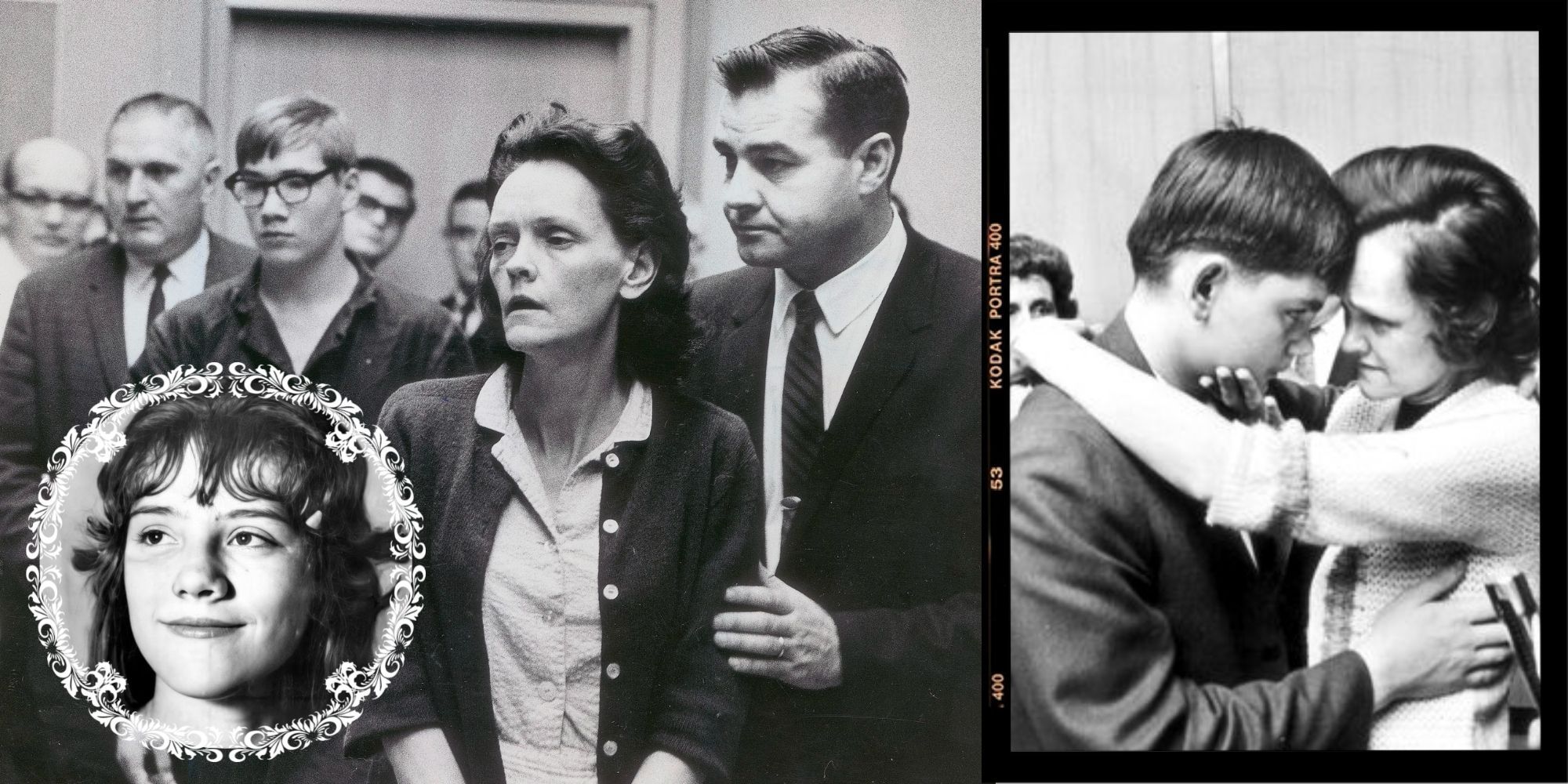For anyone who has ever found themselves curious about the less talked about corners of history, or maybe you're just looking to grasp some of the more unsettling stories that have shaped our past, it's worth taking a moment. We're going to spend some time looking at a name that, for many, might not immediately ring a bell, yet, it's connected to a truly somber part of American history. This discussion is, in a way, about a person whose life became entwined with events that still resonate today, even decades later.
The story we're exploring today centers around Stephanie Baniszewski, a name that, quite honestly, carries a heavy weight for those familiar with a particularly dark case from the mid-1960s. It’s a story that, as a matter of fact, highlights the devastating consequences when abuse goes unchecked and how one individual's life can be forever altered by the actions of others. We'll try to piece together her involvement from the available details, focusing on the human aspects of a very difficult situation.
So, pull up a chair, if you will, as we talk about Stephanie Baniszewski, a person whose name is, in some respects, almost synonymous with a chilling historical account. It's a challenging topic, to be sure, but one that offers a stark reminder of past events. We'll approach this with care, respecting the gravity of the situation and the individuals involved, just a little bit, as we unfold the narrative that surrounds her.
Table of Contents
- Who Was Stephanie Baniszewski?
- The Baniszewski Household - What Was It Like?
- The Tragic Events of 1965
- Stephanie Baniszewski - Her Role in the Trial
- How Did Stephanie Baniszewski's Story Unfold?
- A Legacy of Notoriety - Why Remember Stephanie Baniszewski?
- What Became of Stephanie Baniszewski?
- Reflecting on a Dark Chapter
Who Was Stephanie Baniszewski?
Stephanie Baniszewski was, you know, a young person caught up in circumstances that were truly beyond what anyone should ever have to experience. Born in 1950, she was just fifteen years old when the events that would forever mark her name took place in 1965. She was the daughter of Gertrude Baniszewski, a figure whose name, sadly, became infamous in American crime accounts. Her father was Stephan John Baniszewski.
She was, as a matter of fact, the second oldest among Gertrude’s seven children, meaning she had younger siblings to consider, too. Her life, it seems, was shaped by the environment she grew up in, which, we understand, was quite troubled. The family structure and the atmosphere within their home played a significant part in the unfolding of a very sad episode in history. It's almost, you could say, a story of how a young life can be dramatically impacted by the environment around them.
Stephanie was one of five children from her parents, Gertrude and John Baniszewski Sr., whose married life, we gather, was not a happy one. This family background, in a way, provides some context for the household environment that would later come under scrutiny. Her personal details, while sparse in public record, paint a picture of a young girl growing up in a home that was, to put it mildly, quite difficult.
Personal Details - Stephanie Baniszewski
| Born | 1950 |
| Age in 1965 | 15 years old |
| Parents | Gertrude Baniszewski and Stephan John Baniszewski |
| Siblings | Second oldest of Gertrude's seven children |
| Approximate Current Age (as of source text) | 65/66 years old |
The Baniszewski Household - What Was It Like?
The home where Stephanie Baniszewski lived, the Baniszewski household, was, quite honestly, a place marked by deep trouble. Accounts suggest it was a setting where a terrible tragedy could, and sadly did, occur. It wasn't a typical family dwelling; rather, it was characterized by conditions that allowed for severe abuse to take root and, in fact, grow. This environment, we understand, played a central part in the horrific events that transpired within its walls.
This household, it seems, was a place where young people like Sylvia Likens, who was known to Stephanie and her sister Paula through school, found themselves in truly dire circumstances. The atmosphere there was, you know, not one of safety or care. Instead, it was a breeding ground for cruelty, which, sadly, became apparent in the treatment of Sylvia. The very nature of the household itself, apparently, contributed to the unfolding of a very dark chapter.
It’s difficult to fully grasp the daily reality within that home, but the details that have surfaced paint a picture of a profoundly dysfunctional setting. The way the household operated, or perhaps didn't operate in a healthy manner, created a space where a young life could be, quite literally, tortured. This is, in a way, a stark reminder of how important a safe and nurturing home environment truly is for everyone, especially for young people.
The Tragic Events of 1965
The year 1965 holds a particularly grim place in American history, largely due to the horrific torture and eventual death of Sylvia Likens. This incident, as a matter of fact, stands as one of the darkest instances of abuse ever recorded in the United States. Stephanie Baniszewski was, as we’ve noted, a fifteen-year-old living in the home where these terrible acts took place. Her connection to Sylvia was through her sister, Paula, and their acquaintances from Arsenal Technical High School.
When the situation reached its dreadful conclusion, Stephanie Baniszewski, it seems, made an attempt to help. She frantically tried to bring Sylvia back, to revive her, but by that point, Sylvia was already gone. This detail, you know, adds a complex layer to Stephanie's involvement, showing her presence during the final moments of a life that was tragically cut short. It’s a moment that, arguably, speaks to the sheer desperation of the situation.
The home itself, the corner house belonging to Gertrude Baniszewski, became the site where Sylvia Likens endured unspeakable suffering and, ultimately, met her end. It’s a place that, in some respects, has become synonymous with this chilling account. The events of that year are a powerful, if painful, reminder of the depths of human cruelty and the devastating effects it can have on an innocent person.
Stephanie Baniszewski - Her Role in the Trial
Following the discovery of Sylvia Likens' passing, the authorities moved swiftly. The police, we learn, took Gertrude, Paula, Stephanie, and John Baniszewski, along with Richard Hobbs and Coy Hubbard, into custody on murder charges. Stephanie Baniszewski found herself, in a way, caught up in a legal process that would bring the horrifying details of Sylvia's treatment to light.
A significant turn in Stephanie Baniszewski's story came when she, quite remarkably, testified against her own family. This act, you know, was a pivotal moment, as it meant she was willing to speak about the terrible things that had happened. Her testimony was a key part of the legal proceedings that followed, bringing a voice to the grim reality of the household.
Later, Stephanie Baniszewski’s legal representative managed to secure a separate legal proceeding for her. This was, as a matter of fact, a crucial development. Eventually, the accusation of murder against her was also dropped. She was, in some respects, separated from the full weight of the charges faced by others involved, which marked a distinct path for her within the legal system. This outcome, apparently, made her situation different from that of other family members.
How Did Stephanie Baniszewski's Story Unfold?
The legal proceedings that followed Sylvia's passing were, you know, some of the most sensational in Indiana’s history. Stephanie Baniszewski was among those standing trial for the serious charge of first-degree murder. Her connection to the case was, of course, direct, given her presence in the home and her family ties.
Coy Hubbard, who was Stephanie Baniszewski’s romantic partner at the time, was also brought in for questioning by the authorities. Like Richard, he chose not to inform his parents about his situation, which, in a way, highlights the secretive nature surrounding the group involved. Stephanie and Coy, we learn, were involved in some of the actions against Sylvia, even pushing her at one point at the instruction of Gertrude. This detail, quite honestly, adds another layer to the complex web of interactions within the household.
The agreement that was reached, we understand, involved Stephanie and Paula Baniszewski, who were known to Sylvia and Jenny through their school connections. The full story of how each individual’s involvement was weighed and judged by the legal system is, apparently, a very intricate one, but Stephanie's path through it was, in some respects, unique due to her testimony and the dropping of her charges.
A Legacy of Notoriety - Why Remember Stephanie Baniszewski?
The name Stephanie Baniszewski, while perhaps not instantly recognizable to everyone, carries a significant weight for those who have looked into the darker corners of American crime history. Her story, you know, serves as a truly chilling warning of the extreme depths of human cruelty and the absolutely devastating repercussions that result when abuse is allowed to continue without intervention. It’s a narrative that, in a way, forces us to confront uncomfortable truths about human behavior.
She, along with her mother, Gertrude Baniszewski, are often regarded as figures that, in American crime accounts, represent something truly wicked. Their lives and the events they were a part of are, as a matter of fact, frequently examined as symbols of evil. This perspective, apparently, highlights the profound impact their actions had on public consciousness and how their story continues to be a point of discussion for those studying historical misdeeds.
The reason for remembering Stephanie Baniszewski, then, isn't to glorify or sensationalize, but rather to acknowledge a painful part of our shared past. It’s about understanding the circumstances that led to such a tragedy and, perhaps, learning from them. Her involvement, though charges were dropped, places her firmly within a narrative that continues to be studied and discussed by those interested in the social and psychological aspects of crime.
What Became of Stephanie Baniszewski?
After the legal proceedings, the direct public record about Stephanie Baniszewski becomes, quite naturally, much less detailed. We know that her attorney was successful in getting her a separate trial, and, as we’ve mentioned, the accusation of murder against her was ultimately removed. This meant her legal fate was different from that of others involved in the case.
The information we have suggests that Stephanie Baniszewski, born in 1950, would be, in some respects, approximately 65 or 66 years old at the time the source material was written. This age reference, you know, gives us a sense of her potential longevity beyond the period of the trial. Her life, presumably, continued outside the intense public scrutiny that surrounded the 1965 events.
While the details of her later life are not widely known, her name remains linked to the tragic events of Sylvia Likens. Her story is a stark example of how individuals, especially young people, can be profoundly affected by the environments they inhabit and the actions of those around them. It’s a quiet reminder, almost, of the long shadows cast by such historical incidents.
Reflecting on a Dark Chapter
The story of Stephanie Baniszewski, intertwined as it is with the horrific events of 1965, serves as a powerful, if unsettling, piece of American history. It’s a narrative that, quite honestly, brings to the forefront the extreme vulnerability of individuals when faced with unchecked abuse and cruelty. The details surrounding the Baniszewski household and the treatment of Sylvia Likens are, in a way, a stark reminder of the dark potential within human interactions.
Stephanie’s role, from her presence during the final moments of Sylvia’s life to her testimony against her family and the eventual dropping of charges against her, paints a complex picture. Her story, you know, highlights the difficult choices and circumstances that can confront individuals caught in such terrible situations. It’s a testament to the intricate nature of legal cases and the varied paths individuals take through them.
Ultimately, revisiting the story of Stephanie Baniszewski is about acknowledging a deeply painful part of our past. It’s about recognizing the enduring impact of such tragedies and, in some respects, understanding the different roles individuals played within them. This account, as a matter of fact, continues to resonate, prompting reflection on the conditions that allow such atrocities to occur and the importance of safeguarding the vulnerable among us.


